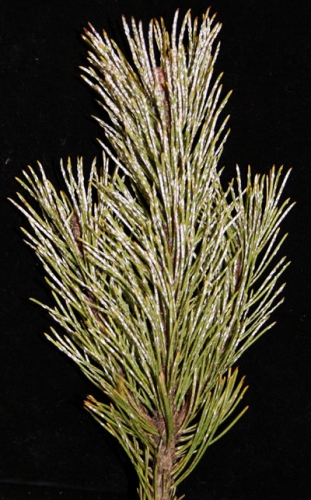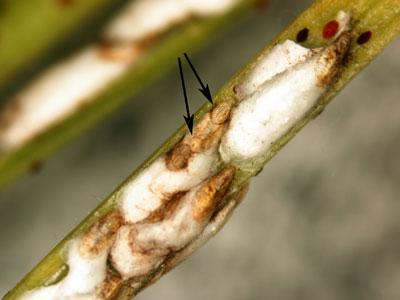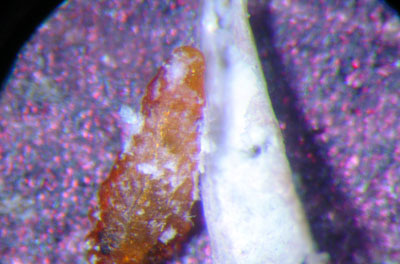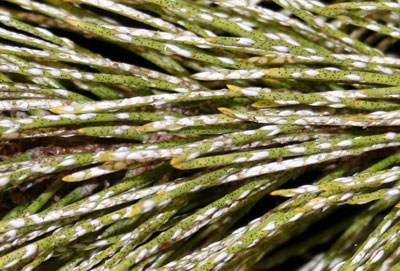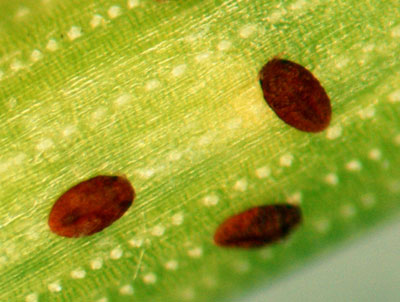Pine needle scale crawlers will be emerging soon
Editor’s note: This article is from the archives of the MSU Crop Advisory Team Alerts. Check the label of any pesticide referenced to ensure your use is included.
We received a sample of Mugo a week or so ago that was heavily infested with pine needle scale Chionaspis pinifolia
(Hemiptera: Diaspididae). Pine needle scale is a common, sometimes
serious pest of two needle pines, especially Mugo and Scotch pines. Pine
needle scale feeds by sucking plant juices from the needles causing the
needles to turn yellow and eventually brown. As pine needle scale
numbers build, the needles become covered with the tiny, white scale
insects.
The insect overwinters in the egg stage under dead female scales.
Because of this dormant oils are not effective against pine needle scale
and other armored scales that overwinter as eggs. There are two
generations of pine needle scale in Michigan. First generation eggs
hatch and the tiny crawlers emerge when lilacs begin to bloom in the
spring. The second generation crawlers appear in late July.
Mugo and Scotch pines should be inspected at least twice a year for
yellowing and large numbers of scales. If pine needle scale becomes
numerous and the tree shows signs of stress, then control measures
should be considered. The least disruptive method is to apply summer
horticultural oil spray when the crawlers are active during the bloom
period of common lilac. Summer oils should be applied at a concentration
of 1.0 to 1.5 percent. A more aggressive strategy is to apply a spray
containing Sevin, malathion or cyfluthrin (sold as Bayer Advanced Garden
Insect Control for homeowners or Tempo for commercial applicators) in
the spring when the first generation crawlers are hatching.
It is important to provide full coverage of the insecticide to interior
portions of the tree, particularly lower branches. Two applications of a
registered insecticide may be necessary to manage heavy populations as
female scales have a long egg-laying period. Be sure to read and follow
all the instructions and safety precautions found on the pesticide label
before using any pesticide.



 Print
Print Email
Email